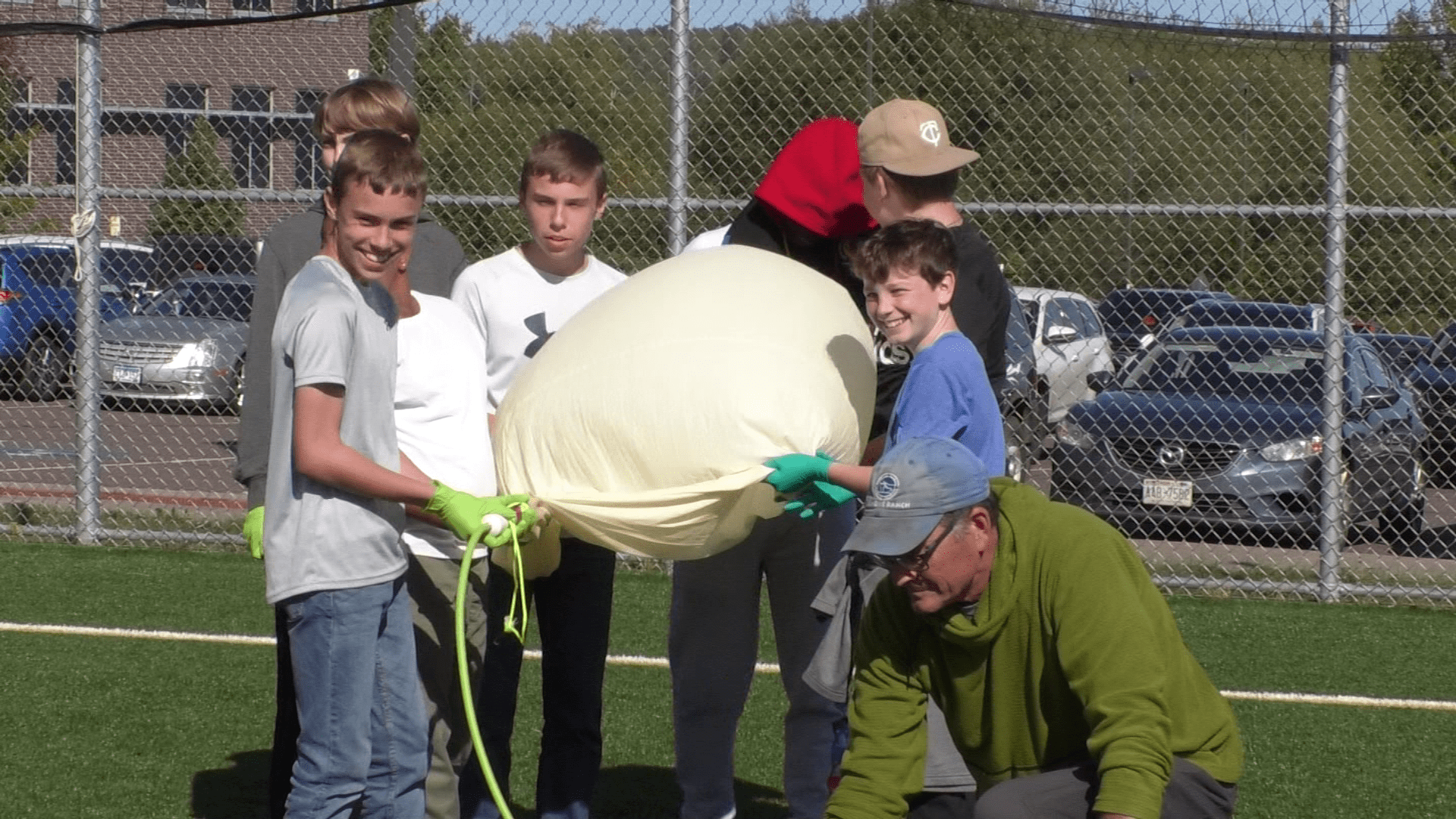Students learning about science and forecast with a weather balloon
[anvplayer video=”5138012″ station=”998130″]
On Wednesday, September 28, 2022, an eighth-grade pre-engineering class at Lincoln Park Middle School and their teacher decided that they launch a weather balloon. This planning process for this project has been in the making for some time.
The date tracked with a weather balloon can tell you the different weather data on a full spectrum, which is very important.
Dave Johnson, a program coordinator, shared details about the project and what the students will be waiting on when the balloon lands.
“We are going to fill that balloon up with helium, launch it off a payload up into the sky. It will go up to about 30,000 meters or 15 miles or straight up. It is going to land over in Wisconsin. And when it lands, we will be able to pull off a video image and possibly pictures from the GoPro camera. And we will also be pulling off information from an Eagle flight computer that is on it.
For one student, this is his second launch. He shared what he is looking forward to with this launch after the first one did not go so well.

“The first time, we launched grass and moss to see what would happen, and the only problem with that one was that the camera did not work. And so we did not get to see any of the photos of it going up into the air and then coming back down. And so we got the balloon back and everything, but the camera did not work. And so hopefully this one with its extended battery life will be able to work well.”
With all this talk about a weather balloon, another question would be; why they are so important. WDIO Storm Track Meteorologist Brandon Weatherz explains the process of weather balloons.
“In assessing weather information, we want to know what is happening at the surface, as well as the top of the troposphere and everywhere in between. The best way to get that information is to have some weather instruments attached to a balloon that travels from the surface to the upper reaches of the atmosphere, and along the way, they are going to be measuring what the temperature is, what the humidity is, and what the air pressure is. Those are the big things that we are interested in.”
Weather balloons are sent into space every day from all across the world.
“In Minnesota, it is one, and in International Falls and one in the Twin Cities area from Chanhassen; those are the two Minnesota weather balloons that go up twice a day around 12 C and zero C. So this time of year, that 7 a.m., 7 p.m.,” says Weatherz.
Other students from Marshall and other areas in St. Louis County will also be launching weather balloons over the four to six months.